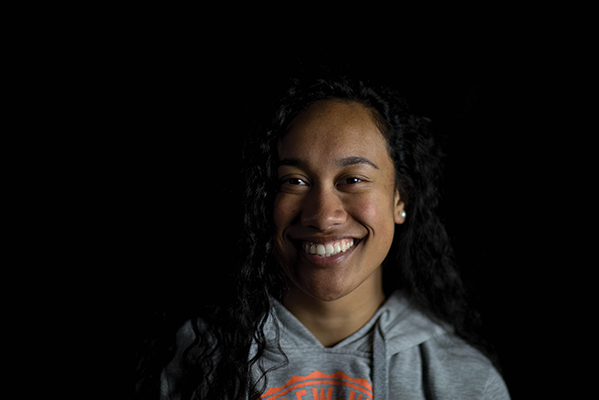Disney Cultures
Paly students discuss the Disney characters meant to represent their cultural backgrounds
It’s easy to say that Disney movies are just that — movies with no importance or value in the real world, purely entertainment for young children. But that may be precisely why they make such an impact. Since we are sharing these stories with our children, are we giving them information that will help them respect humanity in all of its forms? The answer is complicated.
Pocahontas
As a child, senior Dakota Jenkins was excited to see “Pocahontas.” Since then, her understanding of her Native-American culture and community has expanded greatly, and she perceives the movie in a different light.
“I find it degrading almost,” Jenkins said. “It’s not at all how it is, and the things that are brought up are very sacred. It’s almost as if it’s being poked fun of — they’re not educated enough to be making a Disney movie out of my culture.”
From an outsider’s perspective, it feels as though Disney simply took the stereotypes about Native-American culture and turned them into a movie.
“If they really wanted to make it appropriate, they would have included Native-American artists, Native-American directors — they would have Native-American input on it, but they didn’t,” Jenkins said.
“They have a very white, European view on it. It’s quite different from reality, and how it really was. They do a good job of emphasizing the Spirit World, which is appreciated, but it’s really hard to say that they did a great job.”
The Princess and the Frog
In 2009, Disney released the much-anticipated film for the portrayal of the first ever African-American princess. Senior Nadia Leinhos’ thoughts on this pivotal installment could fill a tome.
“I’m glad it exists,” Leinhos said. I’m glad that when they have the giant V-formation of all the Disney princesses now, sometimes Tiana ends up in the middle or behind Rapunzel.”
“I’m glad she’s got a giant ball gown every once in awhile to fit this ideal that Disney princesses have. However, looking back at it, I realize that the only black Disney princess ever spent the majority of the movie as an amphibian.”
Leinhos was stuck on the idea that Disney was checking off a box. After years of pestering from producers and critics, they finally gave the world a black princess, and yet she’s a frog.
However, Leinhos appreciates the effort and the down-to-earth moments that shine through the often muffling curtain of movie magic.
“There’s a line that goes, ‘A little woman of your background can’t own a business!’” Leinhos said. “I appreciated that that was there. Little girls would hear that and realize Tiana isn’t treated very nicely, and her debutante friend has a much nicer house than she does, while she has to work all time.”
Leinhos hopes to see more black heroes in leading roles moving forward, and also discusses the idea of normalizing difference.
“The best characters and the ones that have the most revenue brought in, in TV at least, are the ones that are so human and so driven by their whole life, not just their blackness, that sometimes white audiences will forget that they’re black,” Leinhos said. “First and foremost, they’re human. First and foremost, they’re heroes.”
Moana
With “Moana,” Disney transitioned into a new era of cultural sensitivity. When the movie previews and ads for the movie first aired, seniors Cassie Fong and Lauola Amanoni were understandably jazzed.
“I was really excited, because Disney has already made movies about other cultures, so I was really happy that they made something about Polynesian culture,” Amanoni said. “Especially where we are, there’s not really many people who know what Polynesia is.”
In addition, the detailed animations of the islands and Auli’i Cravalho’s songs worked wonders to win Amanoni and Fong over. However, the movie did not meet all expectations.
“I thought it would be more focused on one island within the Polynesian community, but it kind of mixed in different islands,” Fong said.
Both expressed the sentiment that the movie sped through aspects it could have presented in more detail, but there were also many positive aspects.
“I like how they made the ocean be a character, because they didn’t make the ocean be a type of barrier,” Amanoni said. “The ocean connects all the islands, it represents why all the island cultures were mixed in.”
Fong also reflected on some highlights. “I like how they incorporated the character of the grandma and how she played an important role, because in the Polynesian culture, grandparents play a big role in your life, especially in my life.” Fong also added: “I think even though they told the story really quick, it was still a good portrayal of the community and what our values are.”
Though lacking in some areas, “Moana” helped Disney bridge a cultural expanse it has struggled to cross in the past.
Fong also points out: “I think it brings awareness that we’re not Hawaiian, we’re not Filippino, we’re our own culture, our own people.”
Endnote
Standing the test of time and critical thinkers, Disney has undeniably grown, showing that mass media can be improved to positively impact society and youth. But all change starts from individuals.
As she matured, Jenkins’ views on Native-American representation shifted, too. “Learning more about the culture, making a point to educate myself and learn more from family, friends and people who are more acquainted with the culture — that’s what changed.”


